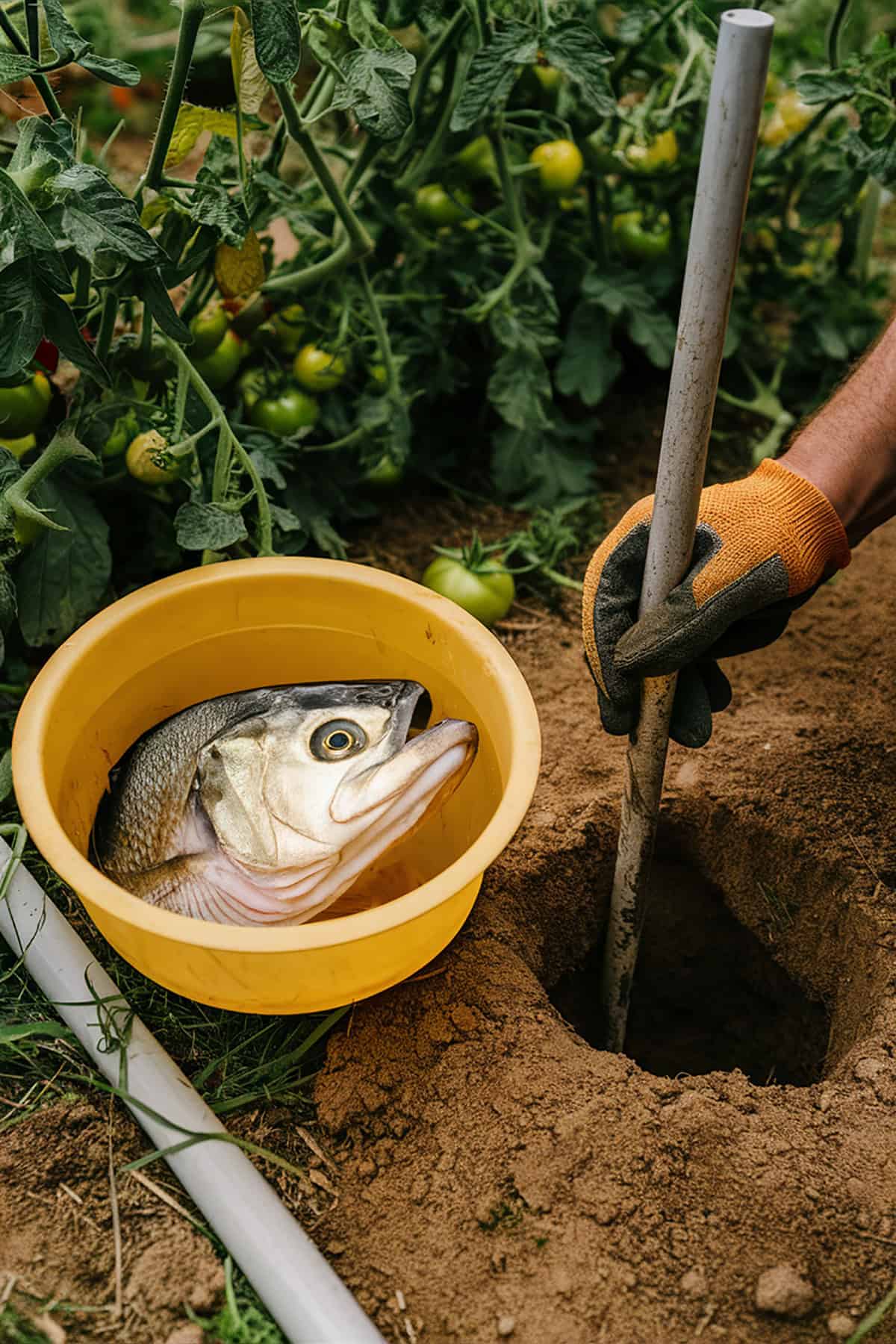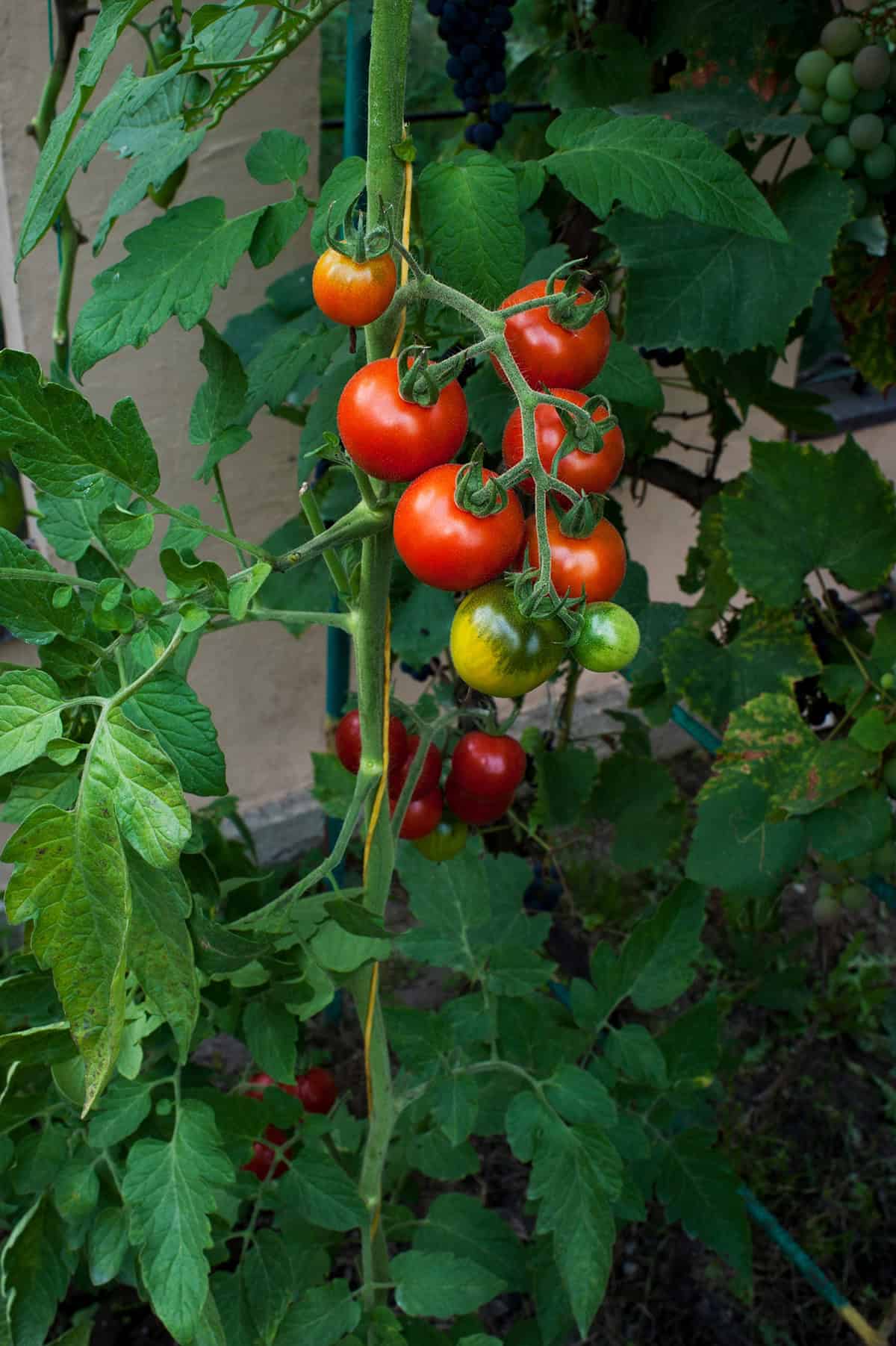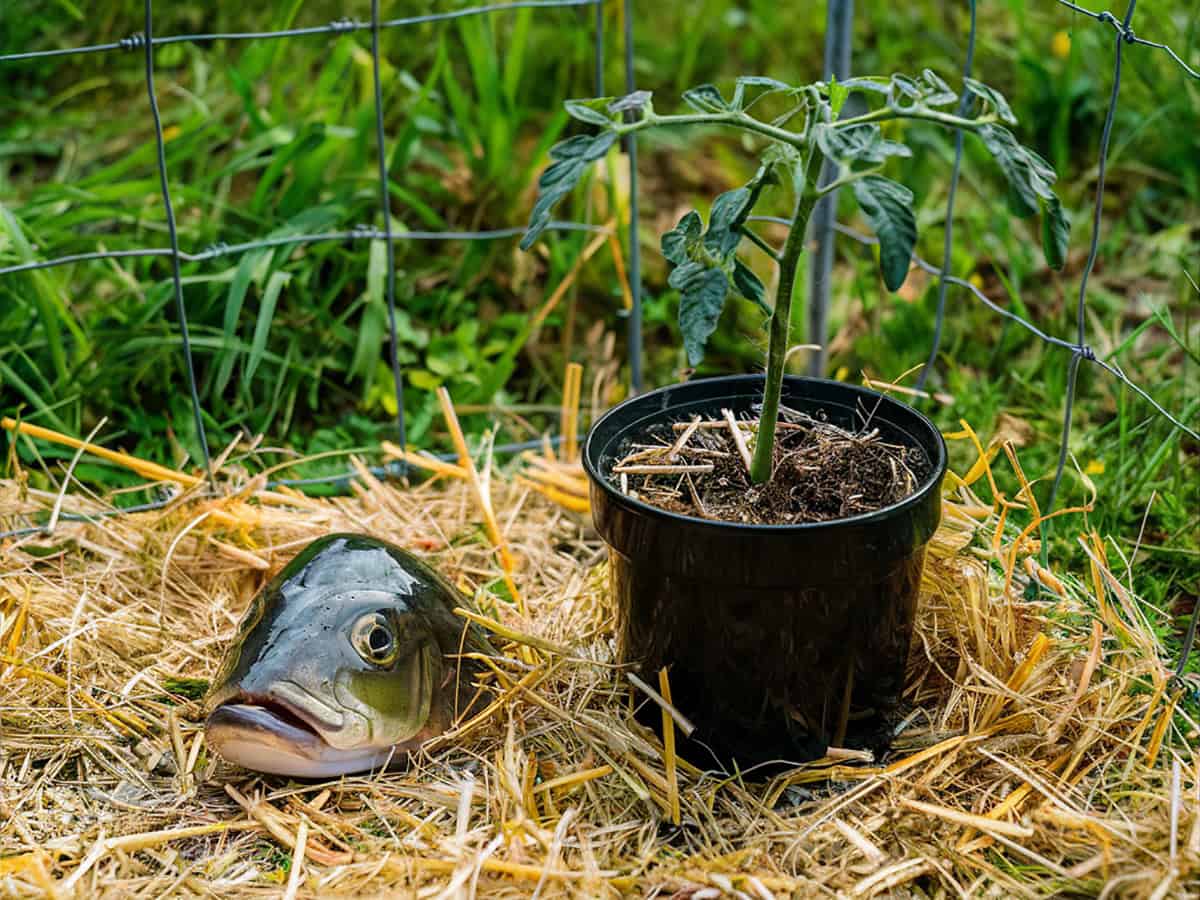You’re planting tomatoes in your garden and recall a tip from an old gardening book: bury a fish head under each plant. It sounds unusual, but this age-old technique can significantly boost your tomato harvest. Here’s why this method works: you’ll learn how to enhance your soil’s fertility naturally and grow healthier, more productive tomato plants.
Table of Contents
Tomato Nutrient Requirements

Tomato plants have specific nutrient needs that vary throughout their growth stages.
Growth Stages and Nutrient Uptake
Seedling Stage: Young tomato seedlings need balanced nutrients for root and leaf development. A mix of nitrogen, phosphorus, and potassium (N-P-K) in equal parts, such as a 10-10-10 fertilizer, works well. Maintain consistent moisture to avoid nutrient deficiencies.
Vegetative Stage: This stage requires more nitrogen to support green leafy growth. An N-P-K ratio of 20-10-10 can be beneficial. Avoid over-fertilizing, as excess nitrogen can delay flowering and fruiting.
Flowering Stage: Once flowering starts, lower the nitrogen. Increase phosphorus and potassium to promote blossoms and fruit set. A balanced fertilizer like 5-10-10 is ideal. Ensure plants are watered evenly to enhance nutrient uptake.
Fruit Development Stage: During fruiting, potassium is crucial for fruit size and flavor. Opt for a fertilizer with higher potassium, such as 5-5-10. Maintain soil health by adding organic matter like compost to support continued nutrient availability.
Ripening Stage: In the final stage, maintain potassium levels. Reduce nitrogen to avoid excessive green growth. Regularly check for nutrient imbalances that can affect fruit quality. Keep the soil evenly moist to ensure nutrients are adequately absorbed.
Benefits of Fish Fertilizer for Tomatoes
Fish fertilizer offers numerous advantages for growing tomatoes, from enhancing soil nutrition to boosting plant health. Key benefits include high nitrogen content, nutrient release through decomposition, and being a better alternative to synthetic fertilizers.
Nitrogen Content in Fish Heads
Fish heads provide a robust source of nitrogen. This essential nutrient supports vigorous growth and lush foliage in your tomato plants. Unlike some fertilizers, the nitrogen in fish heads is organic. It releases slowly into the soil, promoting sustained plant health.
Using fish heads can lead to higher yields. Tomatoes thrive when they get consistent nitrogen. It enhances photosynthesis and overall plant vigor. Fish heads create an ideal environment for your plants to produce more and better-tasting tomatoes.
Nutrients Released by Decomposition
As fish heads decompose, they release a variety of nutrients. These include phosphorus, calcium, and trace minerals. Phosphorus supports root growth and fruit development. Calcium prevents blossom end rot, a common issue in tomatoes.
The decomposition process also enriches the soil. It promotes microbial activity which benefits plant health. This natural enrichment helps tomatoes absorb nutrients more effectively. The slow decomposition ensures plants have a steady nutrient supply throughout the growing season.
Comparison to Synthetic Fertilizers
Compared to synthetic fertilizers, fish fertilizer stands out in several ways. Synthetic options often provide a quick nutrient boost. However, they can lead to nutrient imbalances over time. Fish fertilizer releases nutrients gradually, maintaining soil health.
Fish heads are also environmentally friendly. They don’t harm beneficial insects like bees and butterflies. Synthetic fertilizers can damage soil structure and reduce biodiversity. Using fish fertilizer supports a more sustainable gardening practice while improving tomato yields.
How to Bury Fish Head Under Your Tomatoes

Burying a fish head under your tomato plants can enhance growth by providing essential nutrients. This technique involves knowing the right planting depth, timing, and following specific steps to ensure success.
Planting Depth
To bury a fish head under your tomatoes correctly, consider the planting depth. The hole should be deep enough to cover the fish head and still allow room for the tomato plant’s roots. Typically, this means digging a hole about 12 to 18 inches deep. This depth ensures the fish head decomposes properly and releases nutrients gradually. Too shallow, and it might attract pests; too deep, and the plant’s roots may not benefit fully.
Timing
The best time to bury a fish head for your tomatoes is at planting. Early spring, after the last frost, is ideal for most regions. This timing ensures the fish head has time to decompose and enrich the soil as the tomato plant grows. Avoid doing this in the heat of summer or late fall, as extreme temperatures can hinder decomposition and nutrient release.
Step-by-Step Guide to Do It
- Dig a hole 12 to 18 inches deep. Ensure it’s wide enough to comfortably fit the fish head and the plant roots.
- Place the fish head at the bottom of the hole. Cover it with a few inches of soil. This layer prevents direct contact between the plant roots and the decaying fish initially.
- Position your tomato plant in the hole. Ensure that the plant’s root ball is slightly above the fish head. Fill the hole with soil, packing it gently around the plant.
- Water the plant thoroughly. This helps settle the soil and kick-starts the decomposition process.
Potential Drawbacks and Considerations

When burying a fish head under your tomato plants, it’s important to consider potential issues. These include the attraction of pests and managing odors.
Pest Attraction & Prevention
Burying a fish head can attract pests such as raccoons and stray cats. These animals might dig up your garden searching for the fish. This can disrupt your plants and soil. To mitigate this, you should bury the fish head at least two feet deep. A layer of dirt covers the scent and makes it difficult for pests to dig.
You can also place chicken wire around your garden to deter animals. The wire acts as a barrier without hindering plant growth. Regular inspection of your garden for signs of disturbance can help you act quickly to prevent significant damage.
Odor Management
Fish heads can emit unpleasant odors as they decompose. This odor can attract flies or other insects. To manage this, bury the fish deep enough to limit the smell. Mixing the fish head with garden soil can also help. The soil masks the odor and speeds up decomposition.
Avoid placing fish heads near walkways or common areas, as this minimizes any bothersome smells. Composting the fish heads before using them as fertilizer can also reduce odor. This involves allowing the fish to break down in a controlled environment, thereby reducing the smell when added to the garden.




